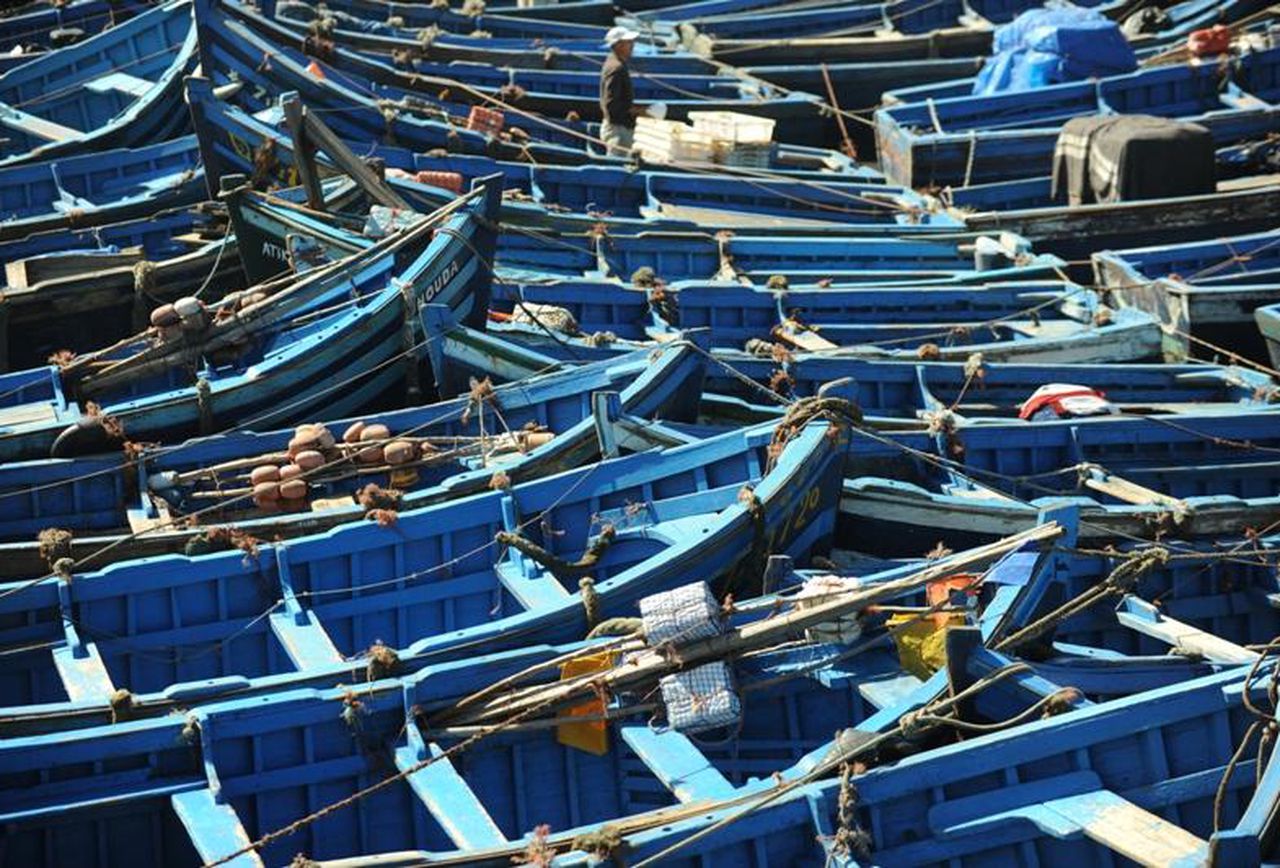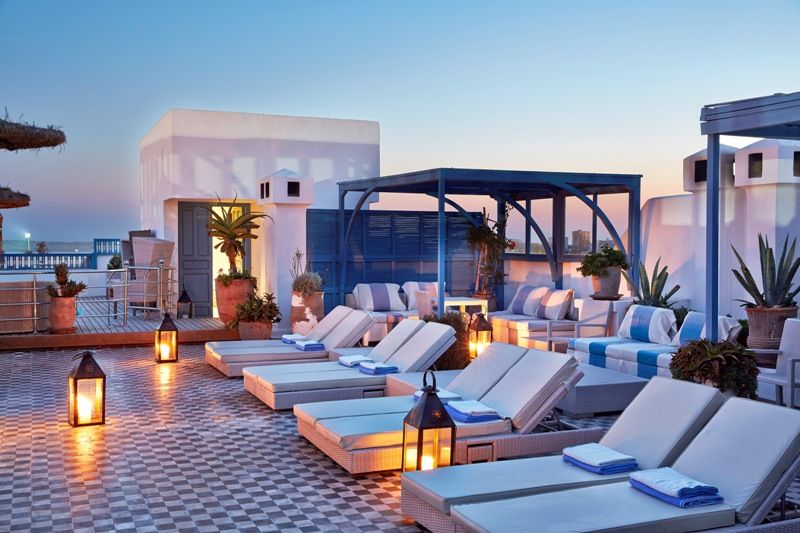Forbes
Bridget Arsenault
The iconic blue boats of Essaouira Courtesy of L’heure Bleue Palais
To travel to Essaouira is to travel back in time. On Morocco’s Atlantic coast, this is far removed from Marrakech’s rakish La Mamounia or Royal Mansour. Essaouira means “little picture” in Arabic and when you step inside this secluded medina it’s immediately clear why.
Picturesque but unusually so. In a world where it’s difficult to find a view with any originality – just think of every UK high street with its Costa Coffee, Boots and Pizza Express, a carbon copy of the town it flanks. But here in Essaouira you’ll find hundreds of blue boats bobbing by the port, crashing waves, buttery sand and a maze of shops and restaurants within the city walls. A fortress town dating back to the 18th century, the entire surrounds are UNESCO World Heritage listed. Only a three-hour flight from London, this was once a getaway for the likes of Bob Marley and Jimi Hendrix, a fact that any local will proudly tell you, and it’s easy to see the charm and energy that enticed such legends here.
The entrance to L’Heure Bleue Palais in Essaouira Courtesy of L’Heure Bleue Palais
The Medina never gets overly crowded or congested and the shopkeepers don’t hassle tourists. There’s a laidback nonchalance here – perhaps induced by the 320 days of sunshine each year. You might be asked once, at most twice, to peek into a storefront and if you politely decline that will be the last you hear of it. The rhythm of the city is calm and casual compared to the frenetic market squares of Istanbul or Fes. And the Medina is linked by the central spine, running down Essaouira directly from Bar Doukkala the northern gate through to the main square Place Moulay Hassan. In the maze of shops you’ll find slippers and supple leather sandals, spices, rugs, chic straw bags and clutches, jewellery and a kaleidoscope of ornaments and kitchenware.Favourite shops include the antique and jewellery finds inside Galérie Aida, run by Joseph Sebag; homeware at L’Atelier; on-trend fashion at Histoire de Filles. There’s also an art quarter, a scant cross-section of streets featuring paintings and mosaics. Perhaps the busiest, owing to the weather and the much-lauded annual Gnaoua Festival, is June but even then it feels sedentary compared to the likes of Oxford Circus or Leicester Square.
The traditional hammam at l’Heure Bleue Palais Courtesy of l’Heure Bleue Palais
The rooftop pool at l’Heure Bleue Palais Courtesy of l’Heure Bleue Palais
The Moroccan restaurant at l’Heure Bleue Palais run by head chef Ahmed Handour Courtesy of l’Heure Bleue Palais
The hotel itself is a bit of a warren, as well as the expected restaurant and bar, there’s also a cinema room and a games room with billiards and a host of family friendly board games. There’s also a charming spa. Dark and marble, book in here for a traditional hammam – you’ll come out scrubbed, shined and buffed. It’s an experience not to be overlooked.
Heure Bleue Palais’ Head Chef Ahmed Handour Courtesy of Heure Bleue Palais
And of course one of the paeans of travel is food – experiencing the diverse food and culture of a far-flung location. Here in the candle-lit salon, the hotel’s longtime head chef Ahmed Handour creates a menu of the day, alongside the general a la carte offering. Seasonal Moroccan cuisine with a hint of European metropolitanism is what they serve. An unmissable item is the lobster carpaccio. Raw, of course, and presented and mixed directly at your table, it has all the tenants of a perfect dish – fresh, light, fragrant and tender. And if you’re curious to take a more behind-the-scenes approach to your dinner, the hotel offers cooking classes with chef Handour, where he’ll take you into his kitchen and reveal the secrets of his signature tagine or any dish of your choosing.
The cooking class, like this delightful property as a whole, is casual and understated. You can suggest on a whim the dish that catches your eye on the menu and like that you’re in an apron cooking it. That’s down to the prescient and unwaveringly kind and considered nature of the staff here and the Moroccan culture as a whole. Nothing is too much trouble, nothing is impossible, everything is a pleasure. And isn’t that precisely what a holiday is meant to be?









